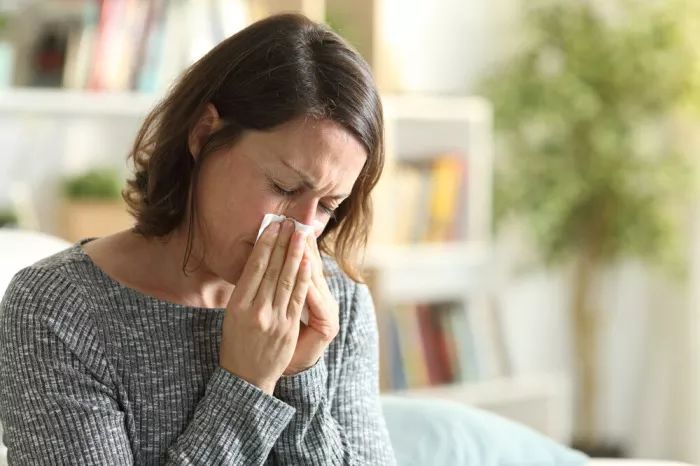Scarring is a natural part of the healing process, but when scars appear on the face, they can be especially noticeable and emotionally challenging. Whether the scar is from acne, a burn, surgery, or an injury, many people are looking for ways to repair and reduce the appearance of facial scars. Fortunately, there are several treatments and methods available that can help improve the texture and appearance of scar tissue. In this article, we will explore how to repair scar tissue on the face, including different treatment options, ingredients to look for, and lifestyle tips to help speed up the healing process.
Understanding Scar Tissue
Before diving into how to repair scar tissue, it’s important to understand what scar tissue is and how it forms. When the skin is injured, the body produces collagen to repair the damaged area. This collagen forms a scar, and the type of scar that forms depends on several factors, including the depth of the wound, the severity of the injury, and how the skin heals.
Types of Scars
There are different types of scars, each requiring specific treatment approaches:
Atrophic Scars: These scars are sunken and can be caused by acne, chickenpox, or other skin conditions. Atrophic scars are often the result of a lack of collagen during the healing process.
Hypertrophic Scars: These scars are raised and red, and they form when too much collagen is produced. They typically stay within the boundaries of the original wound.
Keloid Scars: Keloid scars are similar to hypertrophic scars, but they spread beyond the original wound. They can be larger and more raised, and they are more common in people with darker skin tones.
Contracture Scars: These scars often occur after severe burns and can cause the skin to tighten, limiting movement. These scars may require more advanced treatments to repair.
Factors That Influence Scar Healing
Several factors influence how scars form and how they heal, including:
Age: Younger people tend to heal more quickly and may develop less noticeable scars.
Genetics: Some people are more prone to certain types of scars, such as keloids or hypertrophic scars, due to their genetic makeup.
Skin Type: People with darker skin tones are more likely to develop keloid scars.
Location: Scars in areas of high tension, such as the face, joints, or chest, may form more prominent scars.
Wound Care: Proper care during the healing process can significantly reduce the severity of scars. This includes keeping the wound clean and moist, and protecting it from infection.
Understanding the type of scar you have and the factors affecting your skin will help you determine the best treatment options.
How to Repair Scar Tissue on the Face: Treatment Options
There are several ways to treat scar tissue on the face, from over-the-counter treatments to professional procedures. The most suitable treatment depends on the type and severity of the scar. Below are some of the most effective methods for repairing scar tissue on the face.
1. Topical Treatments for Scar Tissue
Topical treatments are one of the easiest and most accessible options for reducing the appearance of facial scars. These treatments often work by moisturizing the skin, promoting cell turnover, and encouraging collagen production to repair the scar tissue.
Silicone Gel Sheets and Silicone Creams
Silicone is widely considered one of the most effective ingredients for scar treatment. Silicone-based gels and sheets can help flatten and smooth out scars, particularly hypertrophic and keloid scars.
How It Works:
Silicone helps retain moisture and create a protective barrier over the scar.
It reduces collagen production, which can help prevent the scar from becoming too thick or raised.
Effectiveness:
Silicone-based treatments are effective for reducing the size, color, and texture of scars, especially when used consistently for several weeks or months.
How to Use:
Apply a thin layer of silicone gel directly to the scar once or twice a day.
Silicone sheets should be worn over the scar for several hours or overnight, depending on the product instructions.
Vitamin E
Vitamin E is a popular remedy for scar healing. It is an antioxidant that can help repair skin tissue and reduce inflammation.
How It Works:
Vitamin E helps promote the healing of damaged skin by increasing blood circulation and collagen production.
Effectiveness:
While the evidence on vitamin E’s effectiveness for scar treatment is mixed, many people report positive results when using it for reducing the appearance of scars.
How to Use:
Apply pure vitamin E oil or cream directly to the scar area once or twice a day.
Corticosteroid Creams
Corticosteroids are anti-inflammatory drugs that can help reduce redness, swelling, and thickness of scars. They are particularly useful for hypertrophic and keloid scars.
How It Works:
Corticosteroids help reduce the inflammation that causes the scar to become raised and red.
Effectiveness:
Corticosteroid creams are effective for reducing hypertrophic and keloid scars, but they may take several weeks or months to show noticeable results.
How to Use:
Apply a thin layer of corticosteroid cream to the scar and massage it in. Follow your doctor’s recommendations for the duration of use.
2. Chemical Peels
Chemical peels are a popular treatment for improving the texture and appearance of scars, especially atrophic scars caused by acne. This treatment involves applying a chemical solution to the skin, which causes the outer layer of the skin to peel off, revealing smoother, healthier skin underneath.
How It Works:
Chemical peels use acids like glycolic acid or salicylic acid to exfoliate the skin and promote the growth of new skin cells.
This can help reduce the appearance of shallow scars by smoothing the skin’s surface.
Effectiveness:
Chemical peels can be effective for reducing the appearance of acne scars, sun damage, and other superficial scars.
How to Use:
Chemical peels should be performed by a dermatologist or licensed professional to ensure proper application and avoid side effects.
3. Microneedling
Microneedling is a treatment that involves tiny needles that create micro-injuries in the skin. This stimulates the body’s natural healing process and promotes the production of collagen and elastin, which can help reduce the appearance of scars.
How It Works:
A dermaroller or dermapen is used to create tiny punctures in the skin, which encourages collagen production and skin regeneration.
Microneedling can improve the appearance of both atrophic (sunken) and hypertrophic scars.
Effectiveness:
Microneedling is particularly effective for treating atrophic scars, such as acne scars, and can significantly improve skin texture and appearance.
How to Use:
Microneedling should be done by a licensed professional for best results. At-home dermarollers are also available, but they are less effective and may carry a risk of infection if not used correctly.
4. Laser Treatments
Laser treatments are among the most effective ways to treat scar tissue, particularly for deep scars. There are different types of lasers, including fractional CO2 lasers, that target the skin’s deeper layers to promote collagen production and improve skin texture.
Fractional CO2 Laser
How It Works:
The CO2 laser targets the deeper layers of the skin, creating tiny columns of heat that stimulate collagen production.
This can help improve the appearance of both superficial and deep scars by encouraging the skin to regenerate.
Effectiveness:
Fractional CO2 laser treatments can significantly improve the texture and color of scars, especially for deeper scars like acne scars or surgical scars.
How to Use:
Laser treatments should only be performed by a licensed dermatologist or professional to ensure safety and effectiveness.
Fractional Non-Ablative Laser
How It Works:
Non-ablative lasers work by stimulating the deeper layers of the skin without removing the outer skin layers. These lasers promote collagen production and improve the texture of scars.
Effectiveness:
Non-ablative lasers are often used for superficial scars and can be a great option for individuals who want minimal downtime.
How to Use:
Multiple treatments are typically required for optimal results, and it is best to consult with a dermatologist for personalized treatment recommendations.
5. Surgical Scar Revision
In some cases, when a scar is particularly severe or deep, surgical scar revision may be the most effective option. This involves removing the old scar tissue and stitching the wound in a way that minimizes the appearance of the scar.
How It Works:
A skilled surgeon removes the scar tissue and re-closes the wound with precise stitches to minimize scarring.
Effectiveness:
Surgical scar revision can significantly improve the appearance of large, severe scars, but there is still a risk of developing a new scar.
How to Use:
This procedure should only be performed by a board-certified plastic or dermatologic surgeon.
6. Home Remedies for Scar Healing
In addition to medical treatments, there are several home remedies that may help improve the appearance of facial scars. While these remedies may not provide dramatic results, they can be beneficial when used in conjunction with other treatments.
Aloe Vera
Aloe vera is known for its soothing and healing properties. Applying fresh aloe vera gel to a scar can help hydrate the skin and reduce inflammation.
How to Use:
Apply aloe vera gel to the scar and leave it on for 20-30 minutes before rinsing off. Repeat this process 2-3 times a day.
Honey
Honey has natural moisturizing and healing properties that can help soothe scar tissue and improve skin regeneration.
How to Use:
Apply honey to the scar, leave it on for 20 minutes, and rinse off with warm water. Repeat daily.
Conclusion
Repairing scar tissue on the face requires patience and consistency, but with the right approach, it is possible to significantly reduce the appearance of scars. Whether you opt for topical treatments like silicone gel, professional procedures such as microneedling or laser therapy, or home remedies like aloe vera and honey, there are many options available to help repair and improve scar tissue.
Consulting with a dermatologist is crucial to determining the best treatment plan for your specific scar type and skin needs. With the right care and treatment, you can achieve smoother, more even skin and restore your confidence.
Related Topics



































